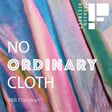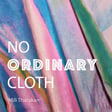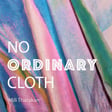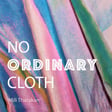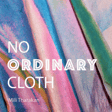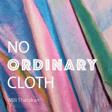
Ep 16. A Catalyst Shaping the Future of Sustainable and Ethical Fabric with Nina Marenzi and Amanda Johnston
In this episode of No Ordinary Cloth, I sit down with Nina and Amanda, the brilliant minds behind the Future Fabrics Expo, to dive deep into how they’re revolutionising the textile and fashion industries through an expo that drives sustainability and innovation. The Future Fabrics Expo has become a key platform in the industry, showcasing thousands of sustainable materials and driving discussions around environmental responsibility, circularity, and collaboration across disciplines to drive the change we want to see in the Fashion and Textile industry.
We explore the growing need for materials that have a positive impact on both the planet and the people working in the supply chain, and discuss how interdisciplinary collaboration is essential to scaling these innovations. Additionally, we take a hard look at the issue of overproduction and how brands need to rethink their business models to prioritise circularity and reduce waste.
Whether you’re a designer, innovator, or sustainability advocate, this episode is packed with insights about the future of sustainable fabrics and why the Future Fabrics Expo is a must-attend event for anyone in the fashion, textile, home and interiors industry.
Key Takeaways:
- The Future Fabrics Expo is not just about showcasing eco-friendly materials—it’s about finding materials that have a net-positive impact on the environment and communities.
- Cross-industry collaboration is vital for the future of fashion. Partnerships between designers, scientists, and manufacturers are driving textile innovations forward.
- The fashion industry must address overproduction and overconsumption by adopting circular business models and focusing on sustainable growth.
Highlights:
- The origins of the Future Fabrics Expo and how it grew into one of the most anticipated events in the sustainable fashion calendar.
- Why materials with regenerative qualities are crucial for the future of the textile industry.
- The role of collaboration between fashion designers, material scientists, and sustainability experts in creating scalable solutions.
- The challenges and opportunities that come with shifting toward more sustainable practices in fashion, including circularity and on-demand manufacturing.
- A preview of what to expect at the Future Fabrics Expo in New York, happening on November 19th and 20th, 2024.
- Hear from attendees and exhibitors about their experience at the Future Fabrics Expo London 2024
Join me on my journey to craft the future of this podcast. I would love to hear your feedback and ideas for the podcast. Get in touch with me here: Contact me
The Sustainable Angle: Website I Linkedin I Instagram
Future Fabrics Expo NYC Edition, November 19 - 20th, 2024. Register here
Seminar Series 2024: Listen here
No Ordinary Cloth: Website I Linkedin I Instagram I Buy me a coffee
Cover art: Photo by Siora, Photography on Unsplash
Music: Inspired Ambient, Orchestraman
